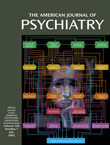Modafinil-Associated Clozapine Toxicity
Mr. A was a 42-year-old man with schizophrenia who, because of persistent psychosis and aggressiveness, was felt to be good candidate for treatment with clozapine. Results of pretreatment laboratory tests and an ECG were normal. At the time clozapine was started, Mr. A was taking haloperidol, quetiapine, divalproex, gabapentin, benztropine, and lorazepam. His nonpsychotropic medications included levothyroxine sodium, furosemide, potassium, and docusate sodium. Clozapine treatment was begun at 25 mg at bedtime and titrated to 400 mg/day over 13 days. After it reached a therapeutic dose, all other psychotropic medications were tapered and discontinued (by day 69). On day 70 Mr. A’s serum clozapine level (norclozapine and clozapine) was 761 ng/ml. Because of persistent psychotic symptoms, his clozapine dose was increased to 450 mg/day on day 77. Clozapine monotherapy produced sedation that interfered with his ability to function. To improve sedation, modafinil, 100 mg/day, was administered, starting on clozapine day 82, and titrated to 300 mg/day by day 101; it produced a mild improvement in sedation.On clozapine day 116, Mr. A complained of dizziness, had an unsteady gait, and fell twice. He was afebrile and tachycardic but had normal blood pressure; his blood oxygen saturation was 86%. Results of physical and neurological examinations were unremarkable; an ECG demonstrated sinus tachycardia. Results of a lung ventilation-perfusion scan and routine laboratory tests were noncontributory. A repeat measurement of his clozapine serum level on day 112 showed 1400 ng/ml, substantially higher than Mr. A’s level on day 70. Clozapine and modafinil were discontinued on day 119.Mr. A’s gait disturbance and hypoxemia resolved without sequelae. Clozapine was restarted at 100 mg/day on day 121 and increased to 300 mg/day by day 122. A repeat clozapine level 21 days after it was restarted (and modafinil discontinued) was 1236 ng/ml; 5 weeks later it was 960 ng/ml. It is noteworthy that all measurements were of trough levels determined 10–12 hours after the bedtime dose.
References
Information & Authors
Information
Published In
History
Authors
Metrics & Citations
Metrics
Citations
Export Citations
If you have the appropriate software installed, you can download article citation data to the citation manager of your choice. Simply select your manager software from the list below and click Download.
For more information or tips please see 'Downloading to a citation manager' in the Help menu.
View Options
View options
PDF/EPUB
View PDF/EPUBGet Access
Login options
Already a subscriber? Access your subscription through your login credentials or your institution for full access to this article.
Personal login Institutional Login Open Athens loginNot a subscriber?
PsychiatryOnline subscription options offer access to the DSM-5-TR® library, books, journals, CME, and patient resources. This all-in-one virtual library provides psychiatrists and mental health professionals with key resources for diagnosis, treatment, research, and professional development.
Need more help? PsychiatryOnline Customer Service may be reached by emailing [email protected] or by calling 800-368-5777 (in the U.S.) or 703-907-7322 (outside the U.S.).

